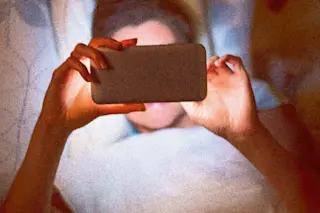Zachary Howard wearing his synesthesia mask. (Credit: Instructables) What does a Picasso painting smell like? For individuals with synesthesia, catching the odor of, say, plum, while scrutinizing a painting from Picasso's blue period is just part of experiencing the world. A small percentage of the population are synesthetes, or people who interpret sensual stimuli with more than one sense — smelling colors, or tasting sounds for example. While very few people have access to this unique perspective on the world, there is now a way for the rest of us to get a taste, or whiff, of what synesthesia is like.
Zachary Howard, an aerospace engineer completing a fellowship at Autodesk, created a mask that mimics the effects of synesthesia using a color sensor, microprocessor and essential oils. By linking a sensor worn on the finger to an Intel Edison chip on the armband, Howard's device breaks any object's color ...









